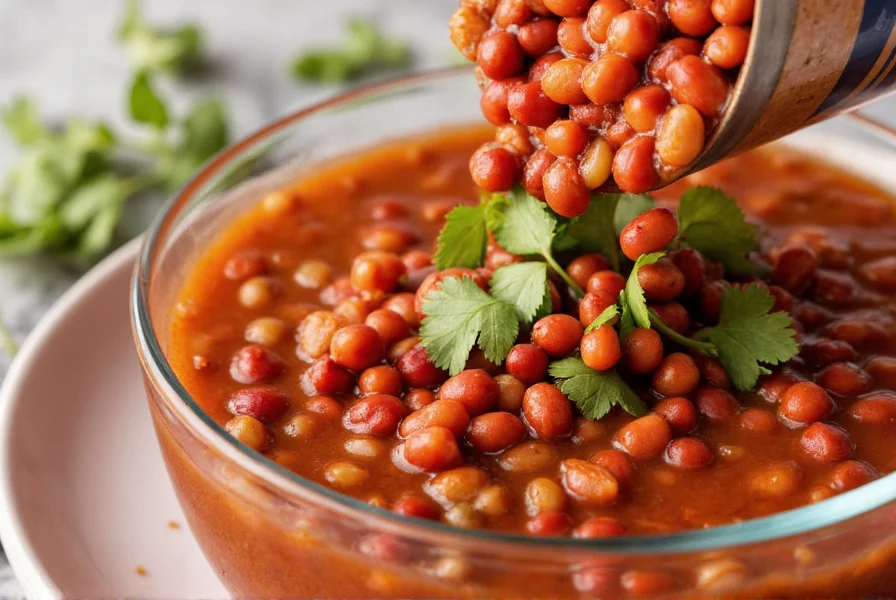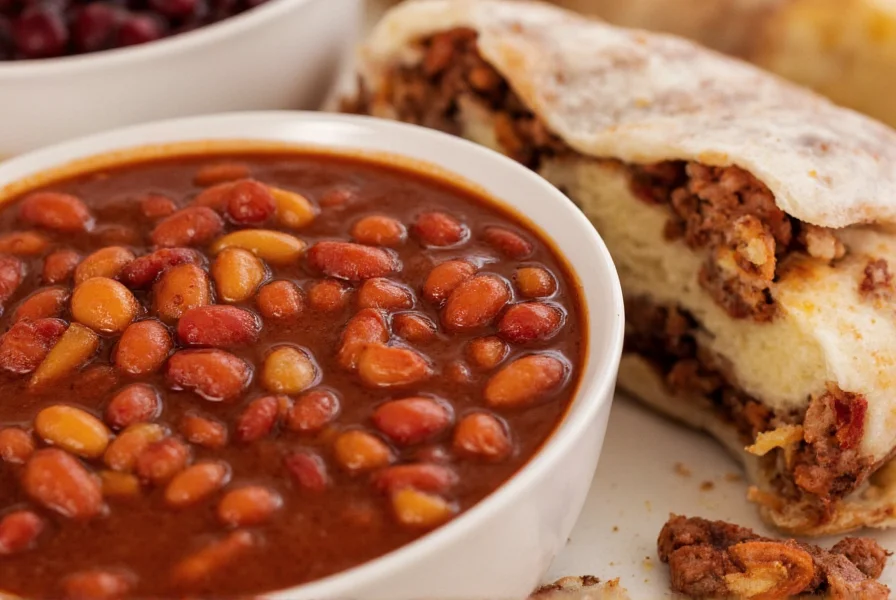When exploring how to use canned chili beans effectively in your kitchen, understanding their composition and versatility is essential. These pantry staples contain a blend of beans, tomatoes, chili seasonings, and sometimes meat or additional vegetables, all pre-cooked and sealed for freshness. Most varieties include pinto beans, kidney beans, or a combination, along with tomato sauce, onions, garlic, and chili powder.
Nutritional Profile of Canned Chili Beans
Understanding the nutritional value of canned chili beans helps home cooks make informed decisions. While formulations vary by brand, a typical 1-cup serving provides:
| Nutrient | Amount per Serving | % Daily Value |
|---|---|---|
| Calories | 220-280 | 11-14% |
| Protein | 9-12g | 18-24% |
| Fiber | 7-10g | 25-35% |
| Sodium | 400-800mg | 17-35% |
| Sugar | 4-8g | 8-16% |
These values make canned chili beans a valuable source of plant-based protein and dietary fiber. For those monitoring sodium intake, look for low sodium canned chili beans options or rinse the beans before use to reduce sodium content by up to 40%.

Selecting the Best Canned Chili Beans
When choosing the best canned chili beans for recipes, consider these factors:
- Ingredient quality - Look for products with recognizable ingredients and minimal preservatives
- Sodium content - Standard versions can be high in sodium; low-sodium options provide more control over seasoning
- Bean texture - Premium brands often maintain better bean integrity during processing
- Additives - Some contain meat or additional vegetables; check labels based on your recipe needs
- Organic certification - Available for those seeking pesticide-free ingredients
Reading labels carefully helps identify products with the healthiest canned chili beans ingredients. Many quality brands now offer options with no added sugar, reduced sodium, or organic certification.
Creative Uses for Canned Chili Beans Beyond Traditional Chili
While many home cooks limit canned chili beans to traditional chili recipes, their versatility extends far beyond. Understanding cooking with canned chili beans opens numerous culinary possibilities:
1. Quick Bean Dips and Spreads
Blend drained canned chili beans with cream cheese, sour cream, or Greek yogurt for an instant dip. Add extra spices or cheese for customized flavors. This approach creates a quick canned chili beans appetizer perfect for entertaining.
2. Hearty Breakfast Options
Incorporate canned chili beans into breakfast burritos or as a side with eggs. The protein and fiber content makes for a satisfying morning meal that keeps you full longer.
3. Enhanced Casseroles and Bakes
Use canned chili beans as a flavorful base layer in casseroles, replacing traditional bean mixtures. They add depth of flavor to Mexican-inspired bakes and comfort food dishes.

Storage and Shelf Life Guidelines
Proper understanding of canned chili beans shelf life ensures food safety and quality:
- Unopened cans - Store in a cool, dry place for 2-5 years
- After opening - Transfer to airtight container and refrigerate for 3-4 days
- Freezing option - Portion into freezer bags for up to 6 months
Always check for signs of spoilage before use, including bulging cans, off odors, or unusual discoloration. When in doubt, discard the product.
Canned vs. Homemade: Making the Right Choice
The debate between canned chili beans vs homemade often centers on convenience versus customization. While homemade allows complete control over ingredients and seasoning, quality canned products offer consistent flavor with minimal preparation time.
For weeknight meals or when time is limited, recipes using canned chili beans provide a reliable solution. When entertaining or seeking a specific flavor profile, homemade might be preferable. Many experienced cooks use a combination approach—starting with canned beans then enhancing with fresh ingredients.
Simple Recipe Ideas Featuring Canned Chili Beans
Here are three straightforward approaches to creative canned chili beans recipes:
- Weeknight Chili Mac - Combine one can of chili beans with cooked elbow macaroni, a splash of milk, and shredded cheddar for a quick comfort food meal.
- Chili Bean Stuffed Sweet Potatoes - Bake sweet potatoes, then split open and fill with warmed canned chili beans, avocado slices, and a dollop of Greek yogurt.
- Chili Bean Salad - Mix drained and rinsed chili beans with corn, black beans, diced bell peppers, and a lime-cilantro vinaigrette for a protein-packed salad.
These easy canned chili beans meal ideas demonstrate how this pantry staple can transform simple ingredients into satisfying meals with minimal effort.
Frequently Asked Questions
Can I use canned chili beans in place of regular beans?
Yes, but with considerations. Canned chili beans already contain seasonings and tomatoes, so adjust your recipe accordingly by reducing added spices and liquid ingredients. For dishes requiring plain beans, regular canned beans would be more appropriate.
How can I improve the flavor of canned chili beans?
Enhance canned chili beans by simmering with fresh aromatics like onions and garlic, adding a splash of beer or broth, incorporating fresh herbs, or finishing with a touch of acid like lime juice. For depth, try adding a small amount of cocoa powder or coffee.
Are canned chili beans already cooked?
Yes, canned chili beans are fully cooked during the canning process and are safe to eat straight from the can. However, heating enhances flavor and texture, and allows for integration with additional ingredients in recipes.
What's the difference between chili beans and regular baked beans?
Chili beans feature a tomato-based sauce with chili spices like cumin and chili powder, while baked beans typically have a sweeter profile with molasses or brown sugar. Chili beans usually contain kidney or pinto beans, whereas baked beans commonly use navy beans.
Can I freeze dishes made with canned chili beans?
Yes, most dishes containing canned chili beans freeze well for 2-3 months. Cool completely before freezing in airtight containers. Thaw in the refrigerator overnight and reheat gently, adding a splash of liquid if needed as beans may absorb moisture during freezing.











 浙公网安备
33010002000092号
浙公网安备
33010002000092号 浙B2-20120091-4
浙B2-20120091-4